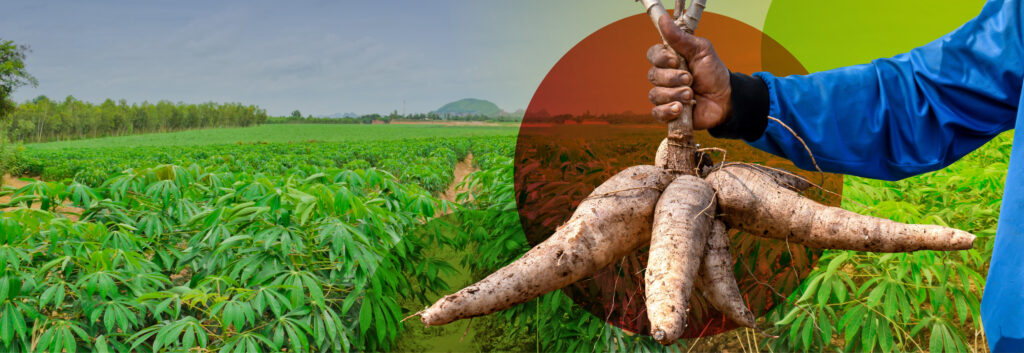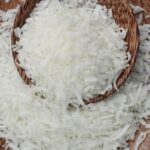CASHEW NUT SHELL OIL
Tapioca starch, extracted from the cassava plant, plays a vital role in industries such as food production, pharmaceuticals, textiles, and sustainable packaging. With its increasing global demand, effective management of the tapioca starch supply chain has become essential for manufacturers and distributors. However, this supply chain faces significant challenges ranging from logistics to environmental factors, alongside opportunities for innovation and growth.
This article delves into the structure of the global tapioca starch supply chain, highlights key challenges, and explores the opportunities to drive success in this dynamic market.

Table of Contents
Toggle1. Structure of the Global Tapioca Starch Supply Chain
The tapioca starch supply chain involves three main stages:
- Cassava Farming and Harvesting: Cassava is predominantly cultivated in tropical regions such as Southeast Asia, Africa, and South America. These areas are well-suited for cassava due to its resilience to poor soils and dry climates.
- Processing and Manufacturing: After harvesting, cassava must be processed within 24-48 hours to preserve its quality. Processing facilities are typically located near farming regions to minimize delays and reduce waste.
- Export and Distribution: Tapioca starch is then transported to global markets, meeting the demands of industries like food manufacturing, bioplastics, and pharmaceuticals.
Despite its simplicity, this supply chain requires seamless coordination among farmers, processors, and distributors to maintain efficiency and quality.
2. Challenges in the Tapioca Starch Supply Chain
a. Logistics and Transportation
The transportation of tapioca starch and its raw materials presents unique challenges:
- Perishability of Cassava Roots: Cassava begins to degrade quickly due to enzymatic activity if not processed within 48 hours. This requires rapid and efficient logistics to prevent loss of quality.
- Rising Freight Costs: Global increases in fuel prices and port congestion have driven up transportation costs, affecting supply chain economics.
- Complex Regulatory Requirements: Countries impose varying customs regulations, tariffs, and documentation standards, complicating international logistics.
b. Environmental and Climatic Factors
The production of cassava is highly influenced by environmental conditions:
- Resilience to Climate Change: Cassava is notably tolerant of drought and poor soils, making it an excellent crop in the face of climate challenges. However, extreme weather events such as floods can still disrupt yields.
- Sustainability Concerns: Unsustainable farming practices, such as over-cultivation, may lead to soil degradation, impacting long-term productivity.
c. Compliance with Quality and Safety Standards
The global nature of tapioca starch markets necessitates adherence to diverse quality standards:
- Market-Specific Requirements: Certifications like HACCP, ISO, and FSSC are crucial for entry into markets like the EU, the US, and Japan. Additionally, certain regions may impose stricter limits on chemical residues or require detailed traceability records.
- Traceability and Transparency: Buyers increasingly demand information about product origins, farming practices, and sustainability, challenging suppliers to enhance visibility across the supply chain.
3. Opportunities in the Tapioca Starch Supply Chain
a. Expanding Market Applications
Tapioca starch’s versatility opens doors to new markets:
- Sustainable Packaging and Bioplastics: With the global push for eco-friendly alternatives, tapioca starch is a key ingredient in biodegradable plastics and compostable packaging materials.
- Gluten-Free and Clean Label Foods: Tapioca starch is a favored choice for gluten-free products and appeals to health-conscious consumers seeking natural ingredients.
b. Leveraging Advanced Technology
The adoption of digital and automation technologies can transform the tapioca starch supply chain:
- Blockchain Integration: Blockchain can enhance transparency, allowing stakeholders to track products from farm to factory to final destination.
- Predictive Analytics: Data-driven tools can forecast market demand, optimize inventory, and reduce wastage.
- Automation in Processing: Advanced machinery ensures consistent quality, faster production, and reduced costs.
c. Strategic Farmer Partnerships
Collaboration with farmers is essential for ensuring a stable supply of cassava:
- Capacity Building: Training programs can teach farmers sustainable agricultural practices to improve yields while protecting the environment.
- Financial and Technological Support: Providing access to high-yield cassava varieties, irrigation systems, and financial resources can bolster productivity and strengthen partnerships.
d. Sustainability as a Key Differentiator
The rising focus on environmental responsibility presents a significant opportunity. Companies prioritizing sustainable sourcing, eco-friendly manufacturing processes, and waste reduction can gain a competitive edge in the market.
4. Conclusion
The global tapioca starch supply chain is both challenging and full of potential. While issues such as logistics, environmental unpredictability, and regulatory complexity present obstacles, they also offer opportunities for innovation, collaboration, and sustainable growth.
By adopting advanced technologies, forging strong partnerships with farmers, and prioritizing sustainability, businesses can enhance efficiency and meet the growing global demand for tapioca starch. As the world shifts towards eco-friendly and sustainable solutions, tapioca starch is poised to play a pivotal role in shaping the future of various industries.
For high-quality tapioca starch products and reliable supply chain solutions, visit Abimexco.com today.












